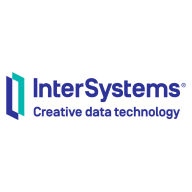

InterSystems Caché and SAP HANA are products in the realm of database management solutions, each targeting high performance and efficiency. SAP HANA appears to have the upper hand with its advanced in-memory computing capabilities.
Features: InterSystems Caché offers real-time data processing, seamless integration capabilities, and robust scalability. SAP HANA provides high-speed data retrieval, simplified data management, and powerful analytics with in-memory technology. The primary difference is SAP HANA's capability to efficiently handle complex processing tasks.
Ease of Deployment and Customer Service: InterSystems Caché allows for flexible deployment options and comprehensive support for smooth implementation. While SAP HANA's deployment process is more complex, it benefits from extensive SAP ecosystem support, offering a wide range of resources and assistance.
Pricing and ROI: InterSystems Caché presents a competitive setup cost with promising ROI due to lower licensing fees and operational costs. SAP HANA, although more expensive, justifies its cost with high processing speed and innovative features, which enhance ROI through potential performance improvements.

SAP HANA, also known as SAP High-performance Analytics Appliance, is a multi-model database that stores data in its memory, allowing users to avoid disk storage. The product combines its robust database with services for creating applications. SAP HANA is faster than other database management systems (DBMS) because it stores data in column-based tables in main memory and brings online analytical processing (OLAP) and online transaction processing (OLTP) together.
The column-oriented in-memory database design allows users to run high-speed transactions alongside advanced analytics, all in a single system. This provides companies with the ability to process very large amounts of data with low latency and query data in an instant. By combining multiple data management capabilities, the solution simplifies IT, helps businesses with innovations, and facilitates digital transformation.
The solution is structured into five groups of capabilities, categorized as:
There are three more SAP products that work alongside SAP HANA and complete the experience for users together. SAP S/4HANA Cloud is a ready-to-run cloud enterprise resource planning (ERP). SAP BW/4HANA is a packaged data warehouse, based on SAP HANA, which allows users to consolidate data across the enterprise to get a consistent view of their data. Finally, SAP Cloud is a single database as a service (DBaaS) foundation for modern applications and analytics across all enterprise data. All three products can combine with SAP HANA to deliver to users an optimized experience regarding their data.
SAP HANA Features
Each architectural group of capabilities of SAP HANA has various features that users can benefit from. These include:
SAP HANA Benefits
SAP HANA provides many benefits for its users. These include:
Reviews from Real Users
According to a database consultant at a pharma/biotech company, SAP HANA is a very robust solution with good data access.
Bruno V., owner at LAVORO AUTOM INF E COM LTDA, likes SAP HANA because the product offers advanced features, helps reduce hours, and makes it easy to find what you need.
We monitor all Embedded Database reviews to prevent fraudulent reviews and keep review quality high. We do not post reviews by company employees or direct competitors. We validate each review for authenticity via cross-reference with LinkedIn, and personal follow-up with the reviewer when necessary.